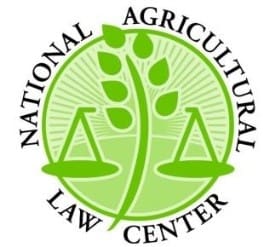A comprehensive summary of today’s judicial, legislative, and regulatory developments in agriculture and food. Email important additions HERE.
JUDICIAL: Includes landowner liability, environmental, and urb & ag issues.
In GREGORY W. PHILLIPS v. J BAR W, INC., et al, No. 1167 September Term, 2016, 2017 WL 4876762 (Md. Ct. Spec. App. October 27, 2017), plaintiff attended a rodeo owned and operated by defendant and was injured by an escaped bull. He sued for strict liability and negligence and lost on both claims. On appeal, plaintiff argued that a “classic rodeo bull” should be considered an “abnormally dangerous animal, unlike bulls kept for stud or other agricultural uses that are labeled domestic ‘based in large part on the fact that its sister, the cow, typically falls within the definition of livestock.’” Appellate court concluded that bulls are not wild animals and that plaintiff “did not plead facts that could sustain a claim that rodeo bulls are abnormally dangerous.” Affirmed for defendant.
SINCLAIR WYOMING REFINING COMPANY; Sinclair Casper Refining Company, Petitioners, v. UNITED STATES ENVIRONMENTAL PROTECTION AGENCY, Respondent. No. 16-9532, 2017 WL 4876177 (10th Cir. October 30, 2017) concerned an amendment to the Clean Air Act (CAA), wherein Congress directed the EPA “to operate a Renewable Fuel Standards Program (the RFS Program) to increase oil refineries’ use of renewable fuels.” Statute at issue required the EPA to grant exemptions on a “case-by-case basis.” Court concluded that the EPA “exceeded its statutory authority under the CAA in interpreting the hardship exemption to require a threat to a refinery’s survival as an ongoing operation.” EPA’s decisions vacated and remand to the agency.
In Donald HILL, et al., Respondents, v. MISSOURI DEPARTMENT OF CONSERVATION, et al., Appellants, No. ED 105042, 2017 WL 4507991 (Mo. Ct. App. October 10, 2017), defendant appealed trial court ruling enjoining enforcement of its regulation regarding the “importation and possession of deer.” Appellate court noted that defendant “has a legitimate interest in protecting its wildlife resources, and . . . [chronic wasting disease] is a serious and fatal threat to the cervids of the state.” Court concluded that it would reverse the trial court, but “because of the general interest and importance of the questions involved,” transferred case to the Missouri Supreme Court.
CITY OF MARIETTA v. SUMMEROUR, S17G0057, 2017 WL 4870931 (Ga. October 30, 2017) involved an eminent domain dispute. Defendant owned a parcel of land that City intended to develop. The parties could not agree on a price and the City resolved to take the land via eminent domain. Lower court entered “order of condemnation” and defendant appealed. Appellate court set aside the order, finding that per statute, City was required to provide plaintiff “a written summary of the basis for its valuation of his land before, or at least around the time that, negotiations commenced.” State Supreme Court affirmed for defendant, concluding that “[i]t was entirely feasible for the City to provide the appraisal summary to [defendant] long before it actually did so,” and that the City failed to comply with statute.
LEGISLATIVE:
S. 2031: A bill to provide for the conveyance of certain National Forest System land within Kisatchie National Forest in the State of Louisiana. Bill referred to the Senate Committee on Agriculture, Nutrition, and Forestry.
S. 2030: A bill to deem the compliance date for amended energy conservation standards for ceiling light kits to be January 21, 2020. Bill referred to the Senate Committee on Energy and Natural Resources.
H.R. 2921: National Forest System Vegetation Management Pilot Program Act of 2017. Bill passed in the House on October 31, 2017 and goes to the Senate next for consideration.
H.R. 2941: Kisatchie National Forest Land Conveyance Act. Bill passed in the House on October 31, 2017 and goes to the Senate next for consideration.
H.R. 2521: South Carolina Peanut Parity Act of 2017. Bill passed in the House on October 31, 2017 and goes to the Senate next for consideration.
REGULATORY: Includes USDA, APHIS, EPA, and NOAA rules and notices.
AGRICULTURE DEPARTMENT: Notice announces a forthcoming meeting of The Council for Native American Farming and Ranching (CNAFR), a public advisory committee of the Office of Tribal Relations. Info here.
ANIMAL AND PLANT HEALTH INSPECTION SERVICE:
Rule APHIS’ quarantine of the 48 conterminous States and the District of Columbia and restrictions on the interstate movement of Berberis, Mahoberberis, and Mahonia spp. plants are imposed to ensure that those plants do not pose a risk of spreading black stem rust or contributing to the development of new races of the rust. Info here.
Notice APHIS extending the comment period for our draft environmental assessment relative to the control of yellow toadflax, which considers the effects of, and alternatives to, the field release of a stem gall weevil, Rhinusa pilosa, into the continental United States for use as a biological control agent to reduce the severity of yellow toadflax infestations. Details here.
ENVIRONMENTAL PROTECTION AGENCY:
Rule EPA is approving a state submission as a revision to the Illinois state implementation plan (SIP) for ozone. Details here.
Rule EPA is approving a state implementation plan (SIP) submission from Minnesota addressing the state board requirements of the Clean Air Act (CAA). Info here.
Rule EPA is making a final determination that the Philadelphia-Wilmington-Atlantic City, PA-NJ-MD- DE marginal ozone nonattainment area has attained the 2008 ozone national ambient air quality standard (NAAQS) by the July 20, 2016 attainment date. Info here.
Rule EPA is proposing to determine that the Lebanon County, Pennsylvania nonattainment area has attained the 2012 annual fine particulate matter national ambient air quality standards (NAAQS). Details here.
NATIONAL OCEANIC AND ATMOSPHERIC ADMINISTRATION: Rule NMFS issues this final temporary rule to establish management measures to allow for the limited harvest and possession of red snapper in or from the South Atlantic exclusive economic zone (EEZ) in 2017 by changing the process used to set the annual catch limit (ACL), as requested by the South Atlantic Fishery Management Council. Info here.
